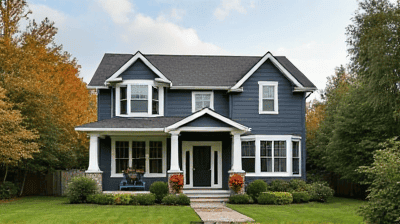
Investing in fixer-uppers—properties that require significant repairs or renovations before they can be lived in or rented out—has long been a popular strategy for real estate investors seeking high returns. In 2025, with shifting market dynamics, rising interest rates, and evolving buyer preferences, the fixer-upper market presents both opportunities and challenges.
What Is a Fixer-Upper?
A fixer-upper is a property that is typically priced below market value due to its need for repairs, updates, or structural improvements. These homes range from dated properties requiring cosmetic upgrades (e.g., new paint, flooring) to distressed structures needing major renovations (e.g., plumbing, electrical systems). Investors are drawn to fixer-uppers for their potential to generate profit through renovation and resale (flipping) or by creating rental income after improvements. In 2025, fixer-uppers remain appealing due to their affordability in a market where move-in-ready homes are often priced at a premium.
Pros of Investing in Fixer-Uppers in 2025
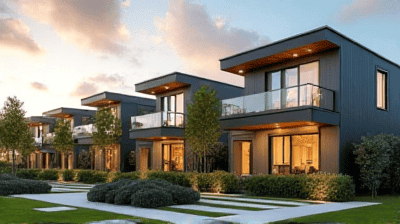
Fixer-uppers offer several advantages, particularly for investors willing to put in the time, effort, and capital to transform a property. Below are the key benefits of this investment strategy in the current market.
1. Lower Purchase Price
One of the most compelling reasons to invest in a fixer-upper is the lower purchase price compared to move-in-ready homes. In 2025, with median home prices in many U.S. markets exceeding 400000 dollars, fixer-uppers provide an entry point for investors with limited budgets. For example, a distressed property in a desirable neighborhood might be priced 20 to 30 percent below comparable renovated homes, offering significant savings.
This affordability allows investors to allocate funds toward renovations while still keeping the total investment below market value for similar properties. In markets like Detroit or Cleveland, where distressed properties are more common, investors can find fixer-uppers for as low as 100000 dollars, renovate for 50000 to 100000 dollars, and sell or rent at a profit.
2. High Return Potential
Fixer-uppers are attractive because of their potential for high returns, especially through flipping. By purchasing a property at a discount, renovating it, and selling it at market value, investors can achieve substantial profits. For instance, a home purchased for 150000 dollars, renovated for 75000 dollars, and sold for 300000 dollars yields a gross profit of 75000 dollars before taxes and fees.
In 2025, markets with strong demand—such as Austin, Charlotte, or Raleigh—offer opportunities for flips due to steady price appreciation. Even in slower markets, strategic renovations that align with buyer preferences (e.g., open floor plans, energy-efficient features) can boost resale value. Rental investors also benefit by turning fixer-uppers into cash-flowing properties with higher rental yields after upgrades.
3. Customization Opportunities
Fixer-uppers allow investors to tailor a property to meet market demands or personal preferences. In 2025, buyers increasingly prioritize features like smart home technology, eco-friendly materials, and modern aesthetics. By renovating a fixer-upper, investors can incorporate these trends, making the property more appealing to buyers or renters.
For example, adding energy-efficient windows, solar panels, or a modern kitchen can differentiate a fixer-upper from older, less efficient homes in the same neighborhood. This customization not only increases marketability but also justifies higher sale prices or rental rates.
4. Less Competition
Move-in-ready homes in desirable areas often attract intense competition, driving up prices and reducing profit margins. Fixer-uppers, however, tend to have less competition because they require more work and upfront investment. This is especially true in 2025, as higher interest rates make buyers more cautious, leaving fixer-uppers to investors with the resources and vision to see their potential.
Lower competition can lead to better deals, as sellers of distressed properties may be motivated to accept lower offers, especially if the home has been on the market for a while. This gives investors leverage in negotiations and a chance to secure properties at favorable prices.
5. Forced Appreciation
Unlike stocks or other investments that rely on market trends, fixer-uppers allow investors to create value through renovations—a process known as forced appreciation. By improving the property’s condition, you directly increase its market value, regardless of broader market conditions. In 2025, with some markets experiencing slower organic price growth, forced appreciation through renovations remains a reliable way to build equity.
For example, upgrading a fixer-upper’s outdated electrical system or adding a bathroom can significantly boost its value, providing a buffer against market fluctuations. This makes fixer-uppers a strategic choice for investors seeking control over their returns.
6. Tax Benefits
Investing in fixer-uppers can offer tax advantages, particularly for rental property owners. Renovation costs, such as materials, labor, and permits, may be deductible as business expenses for rental properties. Additionally, investors can depreciate the property’s value over time, reducing taxable income. In 2025, with tax policies under scrutiny, consulting a tax professional to maximize deductions is crucial for fixer-upper investors.
Cons of Investing in Fixer-Uppers in 2025
While fixer-uppers offer significant potential, they come with challenges that can erode profits or complicate the investment process. Below are the key drawbacks to consider.
1. High Renovation Costs
Renovation costs can quickly spiral out of control, especially in 2025, when inflation and supply chain issues continue to impact construction materials and labor. For example, lumber prices, though stabilized from their 2021 peaks, remain volatile, and skilled labor shortages in some regions drive up contractor fees. A project budgeted at 50000 dollars can easily balloon to 75000 dollars or more if unexpected issues like structural damage or code violations arise.
To mitigate this risk, investors should:
Obtain multiple contractor quotes before starting.
Budget an additional 20 to 30 percent for unforeseen costs.
Conduct thorough inspections to identify potential issues upfront.
2. Time-Intensive Process
Renovating a fixer-upper is not a quick endeavor. In 2025, permitting delays, contractor scheduling issues, and material shortages can extend project timelines significantly. A simple cosmetic renovation might take three months, while a major overhaul could take six months to a year. For flippers, this delay ties up capital and increases holding costs like mortgage payments, taxes, and utilities.
Rental investors also face delays in generating income, as the property cannot be leased until renovations are complete. Time constraints can be particularly challenging for investors with limited resources or those new to the process.
3. Unexpected Structural Issues
Fixer-uppers often come with hidden problems that aren’t apparent during a standard home inspection. Issues like foundation cracks, mold, outdated wiring, or plumbing failures can turn a promising investment into a money pit. In 2025, stricter building codes and environmental regulations may require costly upgrades to bring older homes up to standard, further increasing expenses.
To minimize surprises:
Hire a qualified home inspector with experience in distressed properties.
Consider specialized inspections for HVAC, plumbing, or electrical systems.
Factor in a contingency budget for unexpected repairs.
4. Market Risk
While fixer-uppers allow for forced appreciation, broader market conditions can still impact profitability. In 2025, rising interest rates are cooling demand in some markets, potentially making it harder to sell flipped properties at the desired price. If a market experiences a downturn during the renovation period, investors may face lower-than-expected returns or difficulty finding buyers.
Rental investors are not immune either. If local rental demand weakens or vacancy rates rise, the renovated property may not generate the expected cash flow. Thorough market research is essential to ensure the area supports your investment goals.
5. Financing Challenges
Financing a fixer-upper can be more complex than purchasing a move-in-ready home. In 2025, lenders are increasingly cautious due to economic uncertainty, and many traditional mortgages (e.g., FHA or conventional loans) have strict requirements about a property’s condition. Fixer-uppers often fail to meet these standards, forcing investors to seek alternative financing like hard money loans or 203(k) renovation loans.
These options come with drawbacks:
Hard money loans: High interest rates (10 to 15 percent) and short repayment terms increase costs.
203(k) loans: Lengthy approval processes and restrictions on renovation types can delay projects.
Cash purchases: Tying up significant capital reduces liquidity for other investments.
6. Skill and Experience Requirements
Successfully investing in fixer-uppers requires a mix of skills, including project management, contractor coordination, and market analysis. Inexperienced investors may underestimate renovation costs, overestimate resale value, or mismanage contractors, leading to financial losses. In 2025, with competition for skilled labor and rising costs, these mistakes can be particularly costly.
To overcome this, new investors should:
Partner with experienced mentors or contractors.
Start with smaller projects (e.g., cosmetic renovations) before tackling major overhauls.
Educate themselves through real estate courses or networking events.
Strategies for Success in 2025
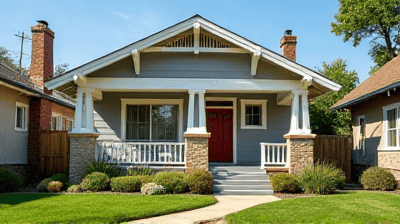
To maximize the benefits and minimize the risks of investing in fixer-uppers, consider these practical strategies tailored to the 2025 market.
1. Conduct Thorough Due Diligence
Before purchasing a fixer-upper, research the property and market extensively. Use tools like Zillow or Redfin to analyze comparable sales and rental rates in the area. Visit the property multiple times and hire a qualified inspector to identify potential issues. Check local zoning laws and permitting requirements to ensure your renovation plans are feasible.
2. Focus on High-ROI Renovations
Not all renovations are created equal. In 2025, prioritize upgrades that offer the highest return on investment (ROI). According to industry reports, kitchen remodels, bathroom additions, and energy-efficient upgrades (e.g., new windows or insulation) typically yield the best returns. Avoid over-improving the property beyond what the local market supports, as this can reduce profitability.
3. Build a Reliable Team
A successful fixer-upper project depends on a strong team of professionals, including contractors, inspectors, and real estate agents. In 2025, labor shortages make it critical to establish relationships with reliable contractors early. Seek recommendations from local real estate networks or platforms like Angie’s List, and verify credentials and references before hiring.
4. Leverage Financing Strategically
Explore all financing options to find the best fit for your project. In 2025, consider:
FHA 203(k) loans: Ideal for owner-occupants who plan to live in the renovated property.
Home equity loans: Suitable for investors with existing properties to tap into equity.
Private lenders: Offer flexibility but require careful scrutiny of terms. Work with a mortgage broker to compare options and secure favorable rates.
5. Monitor Market Trends
Stay informed about local and national real estate trends. In 2025, rising interest rates and economic uncertainty may affect buyer demand, so focus on markets with strong fundamentals, such as job growth and population increases. Use resources like the National Association of Realtors or local MLS data to track market conditions.
6. Plan for Contingencies
Always budget for unexpected costs and delays. A rule of thumb is to allocate 20 to 30 percent of your renovation budget for contingencies. Additionally, create a realistic timeline that accounts for permitting and contractor availability, especially in a competitive 2025 market.
Case Study: A Fixer-Upper Success in 2025
To illustrate the potential of fixer-uppers, consider a hypothetical example in Charlotte, North Carolina, a market with strong growth in 2025. An investor purchases a distressed three-bedroom home in an up-and-coming neighborhood for 200000 dollars. The home requires 80000 dollars in renovations, including a new kitchen, updated bathrooms, and HVAC repairs. Total investment: 280000 dollars.
After six months of renovations, the investor sells the home for 400000 dollars, based on comparable sales in the area. After accounting for 20000 dollars in closing costs and fees, the net profit is 100000 dollars—a 35 percent return on investment. Alternatively, the investor could rent the property for 2500 dollars per month, generating a 7 percent annual yield after expenses.
This example highlights the potential for high returns but also underscores the importance of accurate budgeting, market research, and strategic renovations.
Conclusion
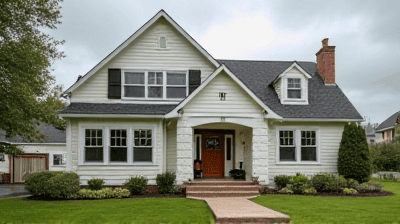
Investing in fixer-uppers in 2025 offers significant opportunities for real estate investors, but it’s not without challenges. The lower purchase price, high return potential, and ability to create forced appreciation make fixer-uppers an attractive option, particularly in markets with strong demand. However, high renovation costs, time-intensive processes, and market risks require careful planning and execution. By conducting thorough due diligence, focusing on high-ROI renovations, and building a reliable team, investors can navigate the challenges and capitalize on the rewards. Whether you’re flipping for profit or building a rental portfolio, fixer-uppers remain a viable strategy for building wealth in the evolving real estate landscape of 2025.
Related
-
Financial News

-
Cryptocurrency
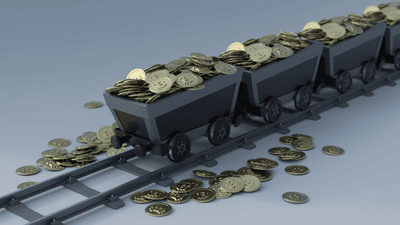
-
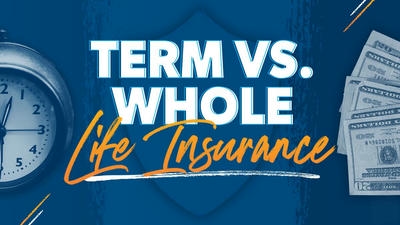
-
Forex Market

-
Economic Indicators

-
Forex Market

